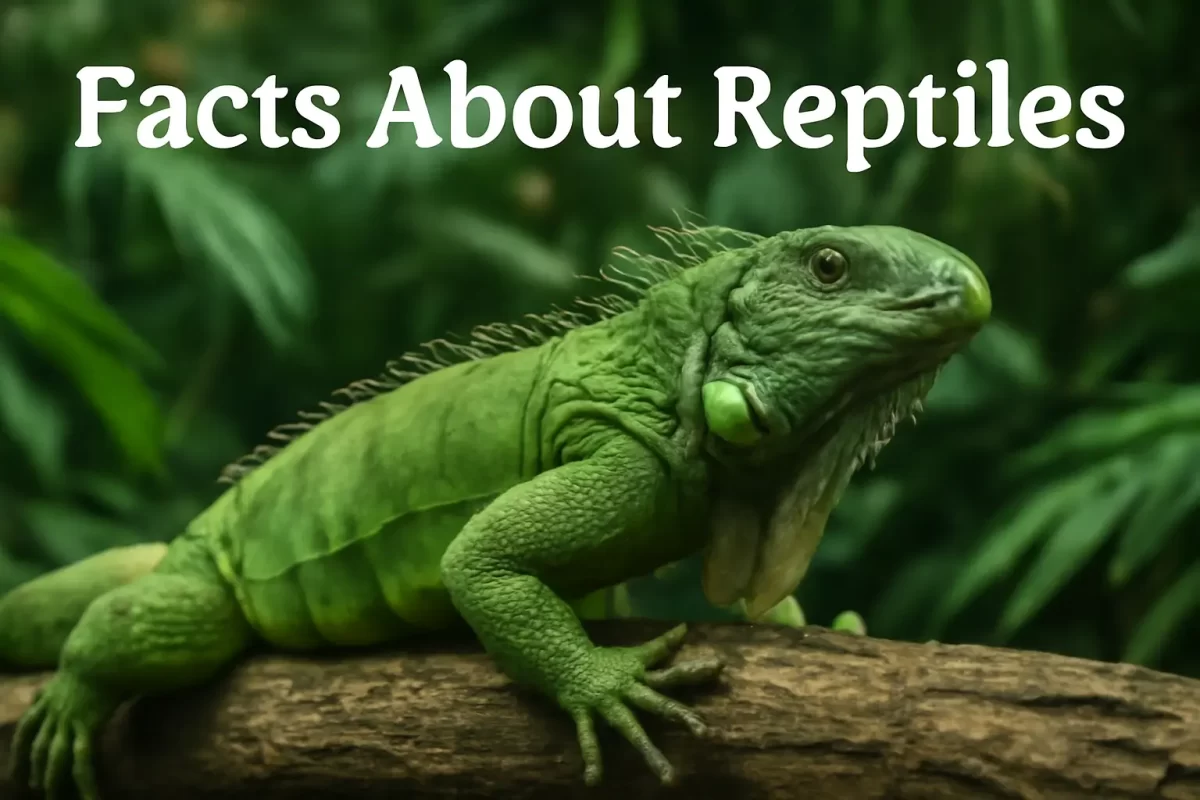Reptiles are among the oldest and most fascinating animals on Earth, ****** back over 300 million years. With their scaly bodies, cold-blooded metabolism, and diverse behaviors, these creatures captivate both scientists and pet lovers alike. In this blog, we’ll explore 12 cool facts about reptiles that make them truly one-of-a-kind in the animal kingdom.
Whether you’re a curious learner, a parent teaching your kids about nature, or a reptile owner looking to know more about your scaly friend, these reptile facts will both educate and amaze you.
1. Reptiles Are Cold-Blooded – But What Does That Mean?
One of the most well-known facts about reptiles is that they are cold-blooded, or ectothermic. This means they rely on external sources like the sun to regulate their body temperature. Unlike mammals, they can’t sweat or shiver to stay warm or cool.
2. Reptiles Have Existed Since the Age of Dinosaurs
Fossil records show that reptiles have been around for over 300 million years. They predate mammals and even birds. Some modern reptiles, like crocodiles and turtles, closely resemble their ancient ancestors.
3. Not All Reptiles Lay Eggs
While many people assume all reptiles lay eggs, that’s not entirely true. Some reptiles, like certain species of snakes and lizards, give birth to live young. This is one of those lesser-known but fascinating reptiles facts.
4. Reptiles Can Regrow Lost Body Parts
Some lizards can regrow their tails if they’re lost to predators or injury. This regeneration ability is not just impressive—it’s a powerful survival adaptation.
5. Reptile Skin Is More Than Just Scales
Yes, reptiles are known for their scales, but did you know that these scales are made of keratin, the same protein that makes up human hair and nails? This tough, protective layer helps them survive in harsh environments.
6. Reptiles Use Tongues to “Smell”
Snakes and some lizards flick their tongues to gather scent particles from the air and transfer them to a specialized organ in their mouth called the Jacobson’s organ. This is a remarkable sensory feature unique to reptiles.
7. Some Reptiles Can Live for Over 100 Years
Giant tortoises, such as the Galápagos tortoise, are known to live for more than a century. This is one of the most awe-inspiring reptile facts—these creatures can outlive generations of humans.
8. Reptiles Have a Three-Chambered Heart
Unlike mammals, which have four heart chambers, most reptiles have three. This anatomical feature reflects their lower metabolism and cold-blooded nature.
9. Some Reptiles Change Color
Chameleons are perhaps the most famous color-changers in the reptile world. While many think they do it for camouflage, they often change color to regulate body temperature or express mood.
10. Reptiles Can Live in Almost Every Environment
From arid deserts to rainforests and even urban areas, reptiles adapt incredibly well to various climates. This resilience is why you’ll find them on almost every continent—except Antarctica.
11. Crocodilians Are Highly Intelligent
Crocodiles and alligators display complex social behaviors, including coordinated hunting and protective parenting. These are among the most surprising facts about reptiles—not all cold-blooded animals are emotionless or simple-minded.
12. Reptiles Communicate in Silent but Powerful Ways
From head bobs to puffing up their bodies or changing color, reptiles have a rich repertoire of non-verbal communication. Understanding these signals is essential for those who keep reptiles as pets.
Why These Reptile Facts Matter
Understanding the unique characteristics of reptiles helps us appreciate their role in ecosystems, informs better pet care, and sparks curiosity in the natural world. These facts about reptiles are more than just trivia—they highlight how evolution, adaptation, and resilience have shaped these animals into the incredible beings they are today.
Final Thoughts
Reptiles are not just mysterious and ancient—they’re also incredibly diverse, resilient, and full of surprising traits. From changing color to living over a century, these reptile facts highlight why these creatures continue to fascinate scientists, nature lovers, and pet enthusiasts alike. The more we learn and share facts about reptiles, the more we can appreciate and protect them.
Frequently Asked Questions (FAQs)
Q1: What is the most interesting fact about reptiles?
One of the most interesting facts about reptiles is that some can regrow body parts like tails. This regenerative ability is rare among animals and showcases the reptile’s incredible survival adaptations.
Q2: Are reptiles smart animals?
Yes! While they don’t show intelligence in the same way as mammals, some reptiles—especially crocodiles and monitor lizards—have shown problem-solving abilities and social behaviors.
Q3: Can reptiles make good pets?
Many reptiles, such as leopard geckos, corn snakes, and bearded dragons, make excellent pets with proper care, suitable habitat, and the right food and environment. It’s essential to research each species’ needs before getting one.
Q4: What makes reptiles different from amphibians?
Reptiles have dry, scaly skin and lay eggs on land, whereas amphibians typically have moist skin and often lay eggs in water. Reptiles are also more adapted to dry environments than amphibians.
Q5: Are all reptiles venomous?
No, only a few reptiles, like certain snakes and the Gila monster, are venomous. Most reptiles are harmless to humans.





